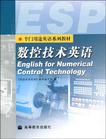数控技术英语
出版时间:2008-1 出版社:高等教育出版社 作者:《数控技术英语》教材编写组 编 页数:216
前言
专门用途英语系列教材是教育部规划的高等学校专业英语阶段的英语教材。本系列教材从培养高级应用型人才的总体目标出发,结合学生毕业后的工作实际,力求向学生提供其未来工作岗位所需要的专业英语知识和技能,培养学生使用涉外业务英语的能力。 本系列教材每册书都由10个单元组成,每单元包括阅读与翻译、模拟套写和听力与会话等内容。 本系列教材主要供高等院校(包括高等专科院校和高等职业院校)专业英语教学使用,也可供电大、各类成人院校及广大专业人员学习专业英语,提高涉外业务交际能力使用。 《数控技术英语》是本系列教材中的一种,是根据《高职高专教育英语课程教学基本要求(试行)》组织编写的。 《数控技术英语》编写的宗旨是以人才市场为导向,以提高学生的职业能力和职业素质为目的,结合专业英语的特点,编写出机械工程,尤其是数控技术方面的专业英语。本书突出数控专业的词语和用法,以典型数控系统的编程和操作英文说明书为主要参考文献,以英文阅读理解、翻译和资料查询为重点,使学生获得阅读和查阅数控机床、数控系统操作与编程英文说明书等的能力。 本教材共10个单元,供一个学期使用。每个单元包括5个部分: 第一部分为“专业阅读”(Tecl"micalandPracticalReading),旨在培养学生阅读数控专业英语的能力。本部分包括两篇文章,所收入的文章能阐述当今数控专业方面的最新高科技机床和加工工艺等,同时配有一些先进的数控机床照片。 第二部分为“了解控制面板”(GlanceataControlConsole),目的是要求学生能弄懂数控机床的操作面板的功能使用。当今数控机床千变万化:但其操作面板变化不是大的,只要学生了解了面板上每个键的功能与作用,就能在工厂实际中得以应用。 第三部分为“模拟套写”(SimulatedWriting),它包括两部分,SectionA为数控常用故障诊断:SectionB为数控小零件程序设计。旨在培养学生根据所学数控专业知识,直接参照范例进行套写、拟写和翻译产品广告、机床说明书、数控系统操作与编程说明书等应用文。 第四部分为“交际会话”(CommunicativeSpeaking),旨在培养学生的专业英语的口头交际能力。
内容概要
《数控技术英语》是该系列教材之一,旨在提高数控类专业学生和数控行业从业人员学习专业英语及涉外业务人员的交际能力。专门用途英语系列教材是教育部规划的高等学校(包括高等专科院校和高等职业院校)专业英语阶段的英语教材,也可供电大、各类成人院校及广大专业人员学习专业英语、提高涉外业务交际能力使用。 《数控技术英语》是根据《高职高专教育英语课程教学基本要求(试行)》组织编写的。依照高职高专的培养目标及其教学的实际情况,《数控技术英语》更注重“边学边用,学用结合”的原则。内容系统、全面,难点、重点突出,并力求实用、先进、通俗、易懂。 全书包括10个单元,每个单元都加入了-些与工厂紧密结合的实用英语例题,同时还设有数控实用英语对话等,书后附有练习参考答案和课文参考译文。 《数控技术英语》既可作为高职、高专、成人高校及本科院校的数控技术及应用、机电一体化等专业的专业英语教材,也可用作企业培训的教材,或相关专业教师、学生及技术人员的学习参考书。
书籍目录
Unit 1 Introduction to Nlumerical ControlPart l Technical and Practical ReadingPassage A: Fundamentals of Numerical ControlPassage B: Use of Microcomputers in NC SystemsPart II Glance at a Control ConsolePart III Simulated Writing Section A: Common Failure DiagnosticsSection B: Have a TryPart IV Communicative Speaking: At the CNC Machine Tools FactoryPart V Broaden Your Horizon —— Get to Know More of the World Famous CompaniesUnit 2 Introduction to Computerized Numerical ControlPart I Technical and Practical ReadingPassage A: Numerical Control (NC) and Computerized Numerical Control (CNC)Passage B: Computerized Numerical ControlPart II Glance at a Control ConsolePart III Simulated Writing Section A: Common Failure DiagnosticsSection B: Have a TryPart IV Communicative Speaking: About CNC Machine ToolsPart V Broaden Your Horizon —— Get to Know More of the World Famous CompaniesUnit 3 Features of Numerical Control Machining ToolsPart I Technical and Practical ReadingPassage A: Operations of NC Machining ToolsPassage B: Machining CentersPart II Glance at a Control ConsolePart III Simulated Writing Section A: Common Failure DiagnosticsSection B: Have a TryPart IV Communicative Speaking: Technical Consultations on CNC Machine ToolsPart V Broaden Your Horizon —— Get to Know More of the World Famous CompaniesUnit 4 Numerical Control part programmingPart I Technical and Practical ReadingPassage A: Introduction to Numerical Control Part ProgrammingPassage B: Other Programming SystemsPart II Glance at a Control ConsolePart Ill Simulated Writing Section A: Common Failure DiagnosticsSection B: Have a TryPart IV Communicative Speaking: Information Exchange on CNC Machine ToolsPart V Broaden Your Horizon —— Get to Know More of the World Famous CompaniesUnit 5 Operating KegulationsPart I Technical and Practical ReadingPassage A: Regulations and Cautions Related to CNC Machine ToolsPassage B: Rules and Cautions Related to ProgrammingPart II Glance at a Control ConsolePart III Simulated Writing Section A: Common Failure DiagnosticsSection B: Have a TryPart IV Communicative Speaking: How to Operate CNC Machine ToolsPart V Broaden Your Horizon —— Get to Know More of the World Famous CompaniesUnit 6 Failure Diagnostics and RepairPart l Technical and Practical ReadingPassage A: Todays CNC Diagnostics and Repair (1)Passage B: Todays CNC Diagnostics and Repair (2)Part II Glance at a Control ConsolePart III Simulated Writing Section A: Common Failure DiagnosticsSection B: Have a TryPart IV Communicative Speaking: CNC Machine Tools RepairPart V Broaden Your Horizon —— Get to Know More of the World Famous CompaniesUnit 7 CNC Machine Tools MaintenancePart I Technical and Practical ReadingPassage A: New Era of CNC Maintenance Is PC-BasedPassage B: Open-loop and Closed-loop ControlPart II Glance at a Control ConsolePart III Simulated Writing Section A: Common Failure DiagnosticsSection B: Have a TryPart IV Communicative Speaking: Maintenance of CNC Machine ToolsPart V Broaden Your Horizon —— Get to Know More of the World Famous CompaniesUnit 8 Field Personnel MrainingPart I Technical and Practical ReadinaPassage A: Training to Operate CNC Machine ToolsPassage B: CNC Maintenance TrainingPart II Glance at a Control ConsolePart IIISimulated WritingSection A: Common Failure DiagnosticsSection B: Have a TryPart IV CommunicativeSpeaking: FieldPersonnel TrainingPart V Broaden Your Horizon —— Get to Know More of the World Famous CompaniesUint 9 gndustrial RobotsPart I Technical andPractical ReadingPassage A: Basic Concepts in RoboticsPassage B: Analog and Digital TransducersPart II Glance at a Control ConsolePart IIISimulated WritingSection A: Common Failure DiagnosticsSection B: Have a TryPart IV CommunicativeSpeaking: Talking About Industrial RobotsPart V Broaden Your Horizon —— Get to Know More of the World Famous CompaniesUint 10 eAD/EAMSystemPart I Technical andPractical ReadingPassage A: The CAD/CAM ConceptPassage B: IndustrialPCsPart II Glance at a Control ConsolePart IIISimulated WritingSection A: Common Failure DiagnosticsSection B: Have a TryPart IV CommunicativeSpeaking: Talking About CAD and CAMPart V Broaden Your Horizon —— Get to Know More of the World Famous Companiesglossaryfist of Abbreviations参考答案和译文
章节摘录
The use of microcomputers in NC systems is well established. Briefly, the variable to be controlled (temperature, position, etc.) is monitored and the output from the sensor monitoring this variable subtracted from a reference signal. The different signal resulting from the comparator is a measure of error, called the actuating signal, which is used as an input to the process. A microcomputer can be used as the controller, which is referred to as direct digital control (DDC).t The motor speed is the variable to be con- trolled. The tachometer acts as a speed transducer, generating a voltage proportional to speed. The comparator is an electronic device. If the speed is low for any reason, the actuating signal is positive, causing the amplifier to feed more current to the motor which increases the torque and therefore the speed. If the speed is too high the actuating signal is negative and the motor reduces torque and slows down. Clearly a stable operating speed will be reached when the tacho-voltage is roughly equal to the reference voltage. The advantages to be gained from the use of microcomputers are (1) regulation against unwanted disturbances; (2) indirect control of what may be a high power by the low power reference signal; (3) a reduction in the undesirable effects of nonlinearities. The output from the transducer is sampled at regular intervals of time close enough together so that the output cannot change appreciably between samples. This information is converted to the binary form by an ADC2 and stored by the computer. And the reading entered into the computer is used.by a program which subtracts it from a reference number to create a digital equivalent. This number is the output from the computer to a DAC3 which produces a proportional voltage which stays constant until reset.
图书封面
评论、评分、阅读与下载
